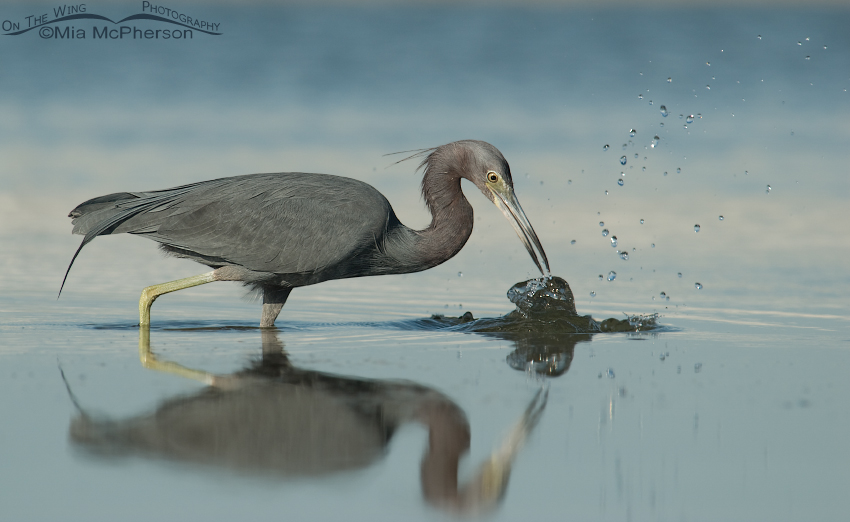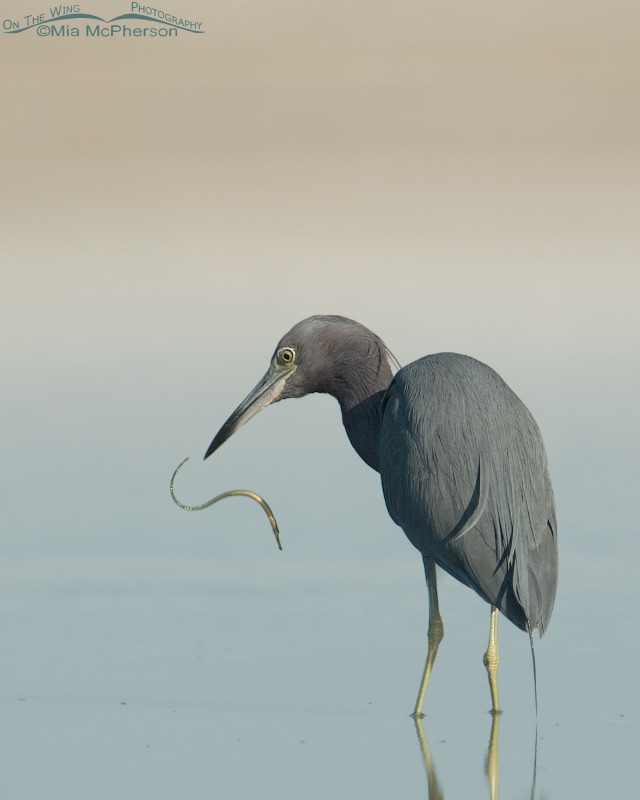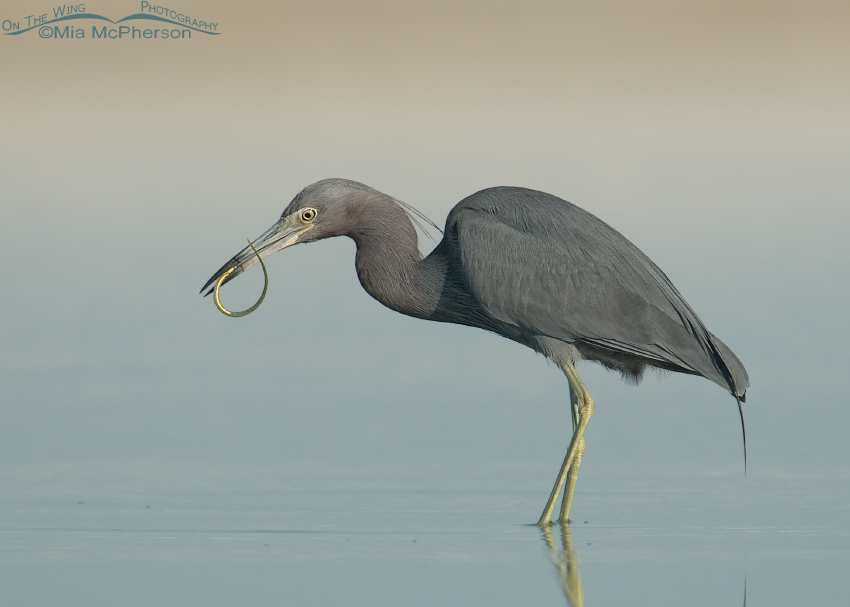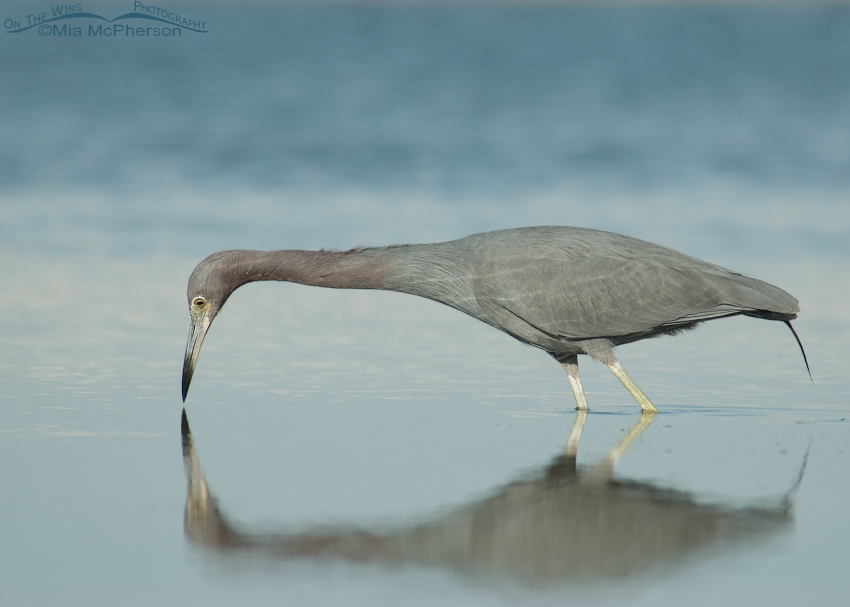 Little Blue Heron misses the prey – D200, handheld, f6.3, 1/800, ISO 200, 80-400mm VR at 360mm, natural light
Little Blue Heron misses the prey – D200, handheld, f6.3, 1/800, ISO 200, 80-400mm VR at 360mm, natural light
There are days when everything seems to go right. The light. The action. The habitat. The company you are with. The birds! Those days are magic.
I met up with a fellow photographer; Bill Leggett, whom I had conversed with on NaturePhotographers.net (NPN). Bill had asked me about the birds of about Fort De Soto so I agreed to meet him there and guide him around on his first visit to the park. Joining us was Adrian Burke, a dear friend of mine who is also a bird photographer.
We all met at the East Beach turnaround since Bill has said he also liked to take landscape photos. Sunrise at east beach can be delightful. Often there are wonderful cloud formations when the sun starts to rise over the water and in the distance you can clearly see the Skyway Bridge (aka Bob Graham Sunshine Skyway Bridge). Many mornings the egrets, herons, shorebirds and gulls are there feeding in the morning light.
Bill, Adrian and I drove up to the north beach of Fort De Soto and began to photograph the birds in earnest. We were very fortunate to find the Little Blue Heron above actively feeding in the tidal lagoon near the concession stand.
The water was fairly calm, the heron was stalking prey, the sky overhead was a glorious blue and we all threw ourselves into capturing this lovely bird with our cameras. Well, I threw myself belly first into the tidal mud at Bill’s request, he wanted to see how I got “down & dirty” to get my low angle shots. The truth is that I would have done it even without Bill’s request!
 Little Blue Heron with Pipefish in mid air – D200, handheld, f6.3, 1/800, ISO 160, 80-400mm VR at 400mm, natural light.
Little Blue Heron with Pipefish in mid air – D200, handheld, f6.3, 1/800, ISO 160, 80-400mm VR at 400mm, natural light.
To our luck the Little Blue Heron found and caught a Pipefish in the lagoon and had a challenging time with it. The pipefish apparently didn’t want to be the heron’s breakfast so it wiggled, twirled and slipped out of the bill of the heron several times. It was great fun to see the action and to be able to photograph it too.
Pipefish are related to seahorses and both are unique. The males have a brood pouch where the females deposit the eggs, the male then fertilizes them and carries the young until they are ready to be expelled into the water.
 Little Blue Heron with Pipefish in bill – D200, handheld, f6.3, 1/800, ISO 160, 80-400mm VR at 400mm, natural light
Little Blue Heron with Pipefish in bill – D200, handheld, f6.3, 1/800, ISO 160, 80-400mm VR at 400mm, natural light
The light was great. We were able to get a smooth gradient style background in some of our images because across the lagoon is a sandy spit of sand that separates the lagoon from the Gulf of Mexico. All of this worked in our favor.
 Little Blue Heron and reflection – D200, handheld, f6.3, 1/750, ISO 160, 80-400mm VR at 400mm, natural light
Little Blue Heron and reflection – D200, handheld, f6.3, 1/750, ISO 160, 80-400mm VR at 400mm, natural light
We took loads of images that day, we walked miles on the sandy beach, saw many different species of birds while sharing knowledge, techniques and fun. Bill and Adrian are great shooting partners. Each time I look at one of the images of this Little Blue Heron I have to smile and relish that amazing morning.
Yes… some day are magic. I treasure each one.
Mia


I know I’m anthropomorphizing, (and you do such an great job of ensuring that you don’t), but in that last shot, I just can’t help seeing a singsong thought bubble over the little heron’s head with “I’m so pretty, oh so pretty! Tra lala la lala la lalaaah!” Your posts always make my day – thanks Mia.
Mel, your comment made my day! Thanks.
Thanks for the info on the pipefish – I didn’t know about the relation to seahorses.